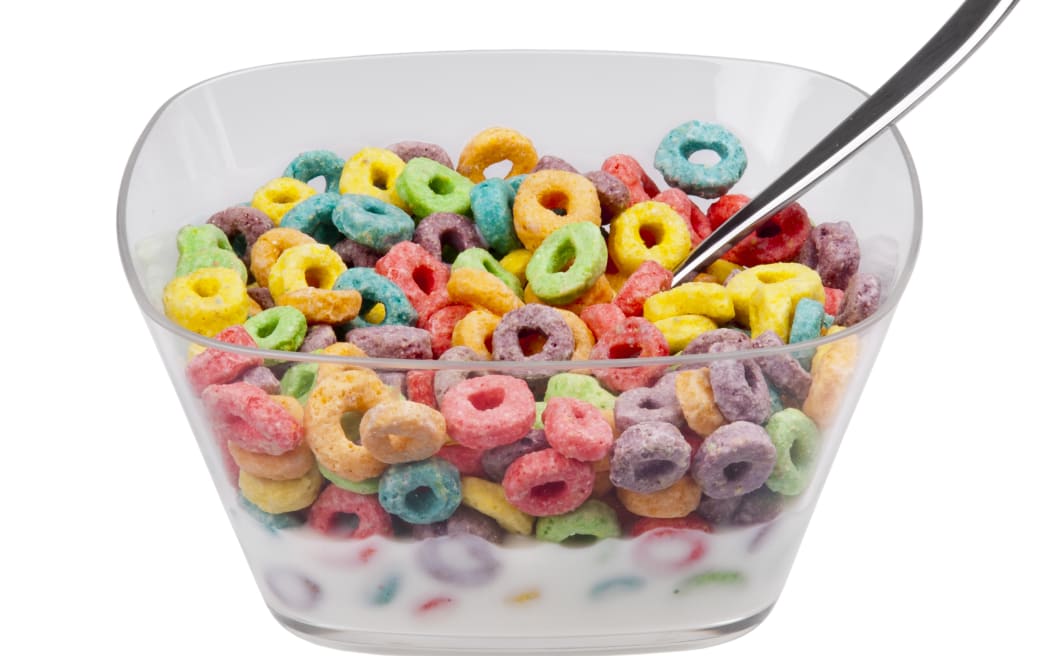New Zealand does have a healthy food ranking system, but it's full of flaws, confusing for shoppers, and easy for manufacturers to get around

Photo: wikipedia
The Food Health Star Rating system is supposed to guide our choices when it comes to packaged food.
But since its introduction 13 years ago it's faced a galaxy of issues, including manufacturers who've managed to get around it, and consumer confusion.
Improvements have been slow.
Critics say the voluntary system gives the food industry a free pass, because they can cherry-pick their ratings, and avoid using it for less healthy products.
Belinda Castles, who is a research and test writer at Consumer NZ, wants to see the Food Health Star Rating system made compulsary for manufacturers.
"Because if they're not mandatory," she asks, "why would they bother?"
Today on The Detail we look at how - and if - the system works.
It was introduced in 2011 by the government so kiwis could measure the healthiness of their food.
The system uses a rating scale of 0.5 to five stars. When comparing similar foods, foods with more stars are deemed to be healthier than foods with fewer stars.
Sounds simple, but the implementation has been far from it.
From Nestle giving its Milo powder a 4.5 star rating despite being almost 50 percent sugar to chocolate milk being rated healthier than regular milk, the trans-Tasman system has had no shortage of critics.
Castles and says there was a lot of confusion in the early days among shoppers over how to actually use the system.
"It's intended for packaged foods, so it shouldn't be a substitute for following the healthy eating guidelines." she says.
Castles also says the system also rates products based on their category.
"You can't compare apples and pears because the calculation's different. So you should look at the cereal aisle and go 'right, within this category I can look at the different ratings, but I can't compare that box of cereals with a box of crackers or a bottle of cooking oil'," she explains.
But even when comparing products within the same category, things don't seem to add up. Nutrigrain has a four star rating. But in just one cup, which is the recommended serving size, there are over nine grams of sugar, almost a third of the public health recommended daily intake.
Professor of Population Nutrition and Global Health at the University of Auckland, Boyd Swinburn, is critical of the system.
"This has been an experiment of government working with industry and with NGOs and academics to try to collectively come up with a system, and that does not work."
He says involving the food industry is problematic because there's a massive conflict of interest.
"They do not want to disclose the unhealthiness of the food products that they're producing. They do not want it to be explicit, interpreted and available to consumers because that could be negative for their bottom line."
Currently the system doesn't differentiate between natural and added sugars. This means that companies can replace natural sugars with artificial sweeteners, maintaining the same level of sweetness while lowering the total amount sugar, which gets them a higher health star rating.
It's been called out by critics as a loophole in the system but the deputy director-general of New Zealand Food Safety, Vincent Arbuckle disagrees.
"I wouldn't call it a loophole; many consumers are concerned about their total sugar intake and we know that generally the New Zealand diet has a higher level of sugar intake than is recommended so moving to a lower sugar intake is a good thing," he says.
Arbuckle says the intention of collaborating with the food industry was to bring them along on the journey and there are milestones set to make sure companies are committing to the system.
"There was a milestone point last year at which the expectation is that 50 percent of eligible products would display the health star rating, there's another milestone this year at 60 percent."
Arbuckle says by the end of next year the goal is 70 percent and that's when officials will look at how well the system's working.
It's unclear where we are at right now but official figures were collated late last year and will be presented to trans-Tasman food ministers around May.
Check out how to listen to and follow The Detail here.
You can also stay up-to-date by liking us on Facebook or following us on Twitter.


